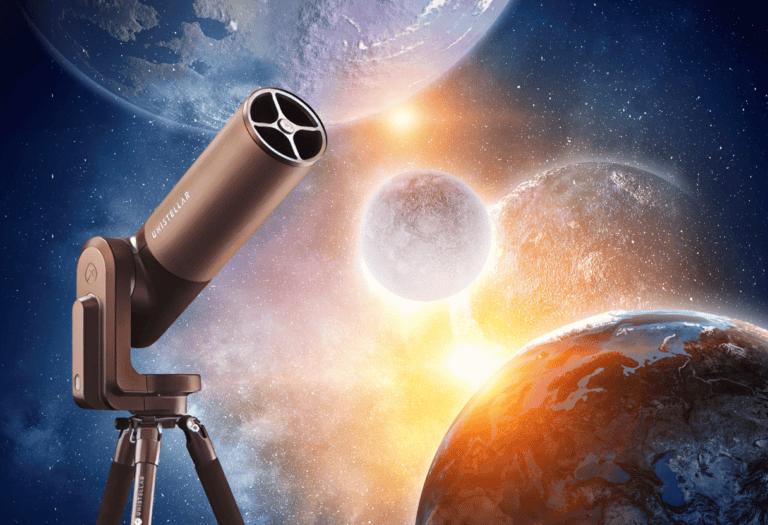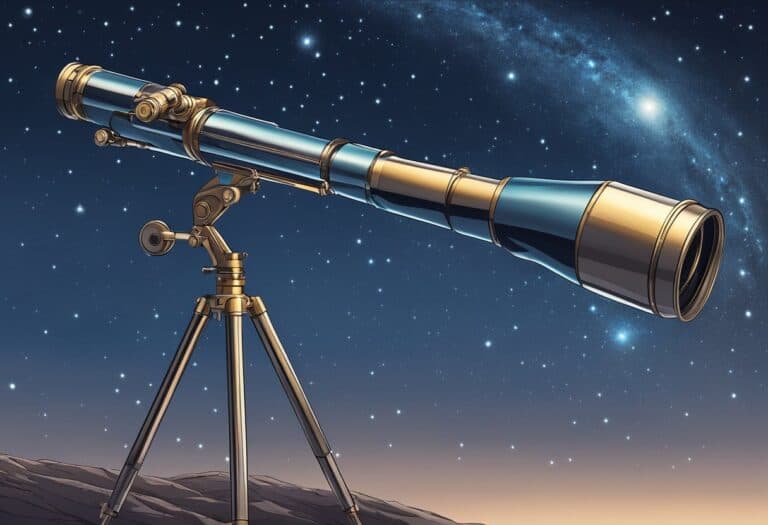Are you ready to safely explore the magnificent Sun through your telescope?
Observing our closest star can be a mesmerizing experience, revealing sunspots, solar flares, and other solar phenomena. However, it’s crucial to use a high-quality solar filter to protect your eyes and equipment from the Sun’s intense light.
But with various options available, how do you choose the best solar filter for your telescope?
Well, we’ll be going over:
- The essential features to consider when selecting a solar filter, including the optical density, material quality, and compatibility with your telescope.
- The importance of choosing a filter that provides safe and clear viewing, blocking harmful ultraviolet and infrared radiation, while allowing you to observe detailed solar features.
- A selection of the top solar filters that stand out for their quality, reliability, and performance, ensuring that you can observe the Sun safely and with great clarity.
Whether you’re an amateur astronomer or a seasoned sky watcher, the right solar filter will enhance your solar observation experience, allowing you to witness the dynamic surface of the Sun without risking eye damage.
Let’s dive in.
Top Solar Filters for Telescopes
- Celestron EclipSmart Filter – Top Pick
- Celestron EclipSmart Filter
- Thousand Oaks 6″x6″ Solar Filter Sheet
- EclipSmart Solar Telescope Filter
- Thousand Oaks 8″x8″ Solar Filter
In my extensive search for the perfect solar observing experience, I’ve compiled a list of the top solar filters that are essential for safe solar viewing. These filters safeguard your eyes and equipment by allowing you to observe the sun directly without any risk. They come with various features and price points to suit both amateur astronomers and seasoned stargazers. My recommendations are based on their quality, ease of use, and customer reviews, ensuring that you get the most reliable and enjoyable solar viewing experience.
Celestron EclipSmart Filter
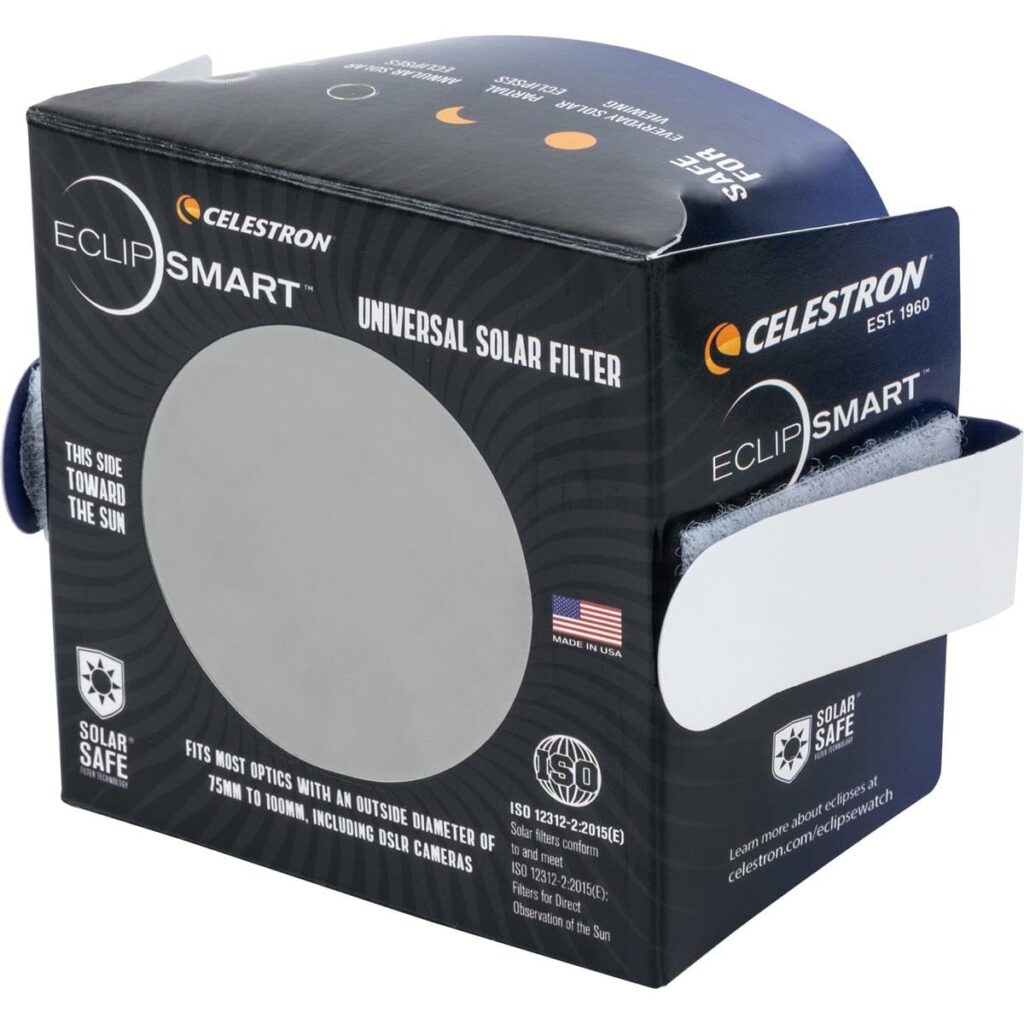
I found the Celestron EclipSmart Filter to be an indispensable, budget-friendly telescope accessory for any amateur astronomer eager to safely explore solar phenomena.
Pros
Cons
Recently, I had the opportunity to try out the Celestron EclipSmart Solar Filter while photographing an annular eclipse. What struck me immediately was how it snugly fit my Celestron 70EQ telescope. The filter’s elastic band was particularly useful, providing a secure fit without much hassle. After the event, storing it flat in its accompanying pouch was a breeze, making it an excellent choice for astronomers who value both functionality and convenience.
During observation, the filter’s performance was spectacular. The orange tint on the filter presented the Sun in a natural and detailed manner, impressing me with the sharp contrast and clarity of sunspots. Despite its lightweight construction, the sturdiness of the adjustable side panels provided confidence that the filter would remain attached even in a mild breeze.
One aspect users should note – the filter is made from paper, which, while keeping it lightweight and easy to manipulate, also means it’s potentially vulnerable to tears or creases if not handled with care. On days with unpredictable weather, additional precautions are necessary, since it’s not water-resistant. Moreover, while the filter is marketed to fit a range of models, it was a little loose on my smaller DSLR lens, though nothing that couldn’t be fixed with some creative tweaking.
Celestron EclipSmart Filter
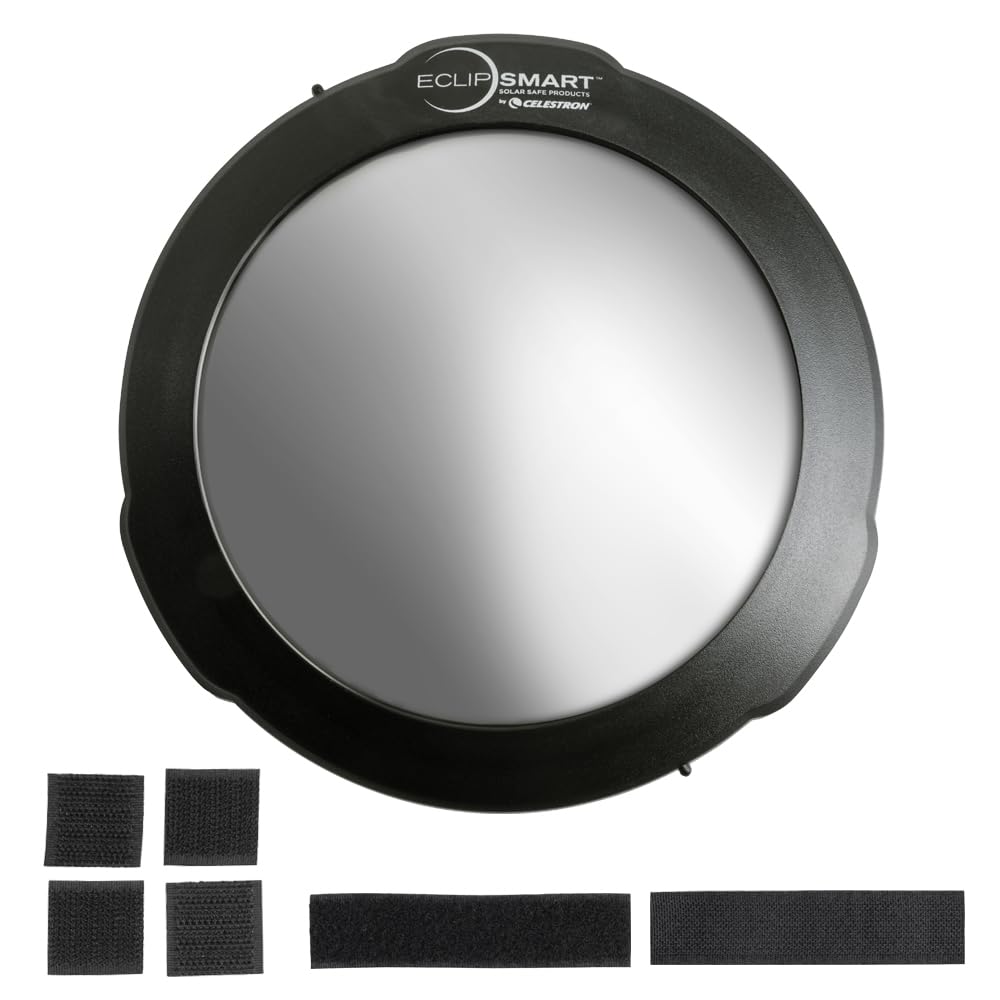
I would definitely recommend this filter for anyone with a compatible Celestron telescope who desires to safely observe the sun.
Pros
Cons
Observing the Sun has always intrigued me, especially during events like solar eclipses. Using the Celestron EclipSmart Filter, I’ve been able to witness solar phenomena safely and with stunning clarity. The orange tint of the filter creates a natural, pleasing visual experience, allowing detailed observation of sunspots and the solar surface.
The ease of attachment is a huge plus. It literally took me seconds to secure the filter to my NexStar 8SE. The hook and loop straps add an extra sense of security, giving peace of mind that the filter won’t slip off during use. This secure fit is crucial, as observing the sun without proper attachment could lead to serious eye damage.
One of the biggest selling points for me was the conformance to ISO 12312-2:2015(E) standards. Knowing that the filter has been tested and is safe for direct solar observation instills confidence with every use. However, users need to be aware that while the filter offers excellent protection when properly attached, the film’s material feels somewhat fragile and demands careful handling. It’s a reminder that quality viewing comes with the responsibility of proper upkeep.
Thousand Oaks 6″x6″ Solar Filter Sheet
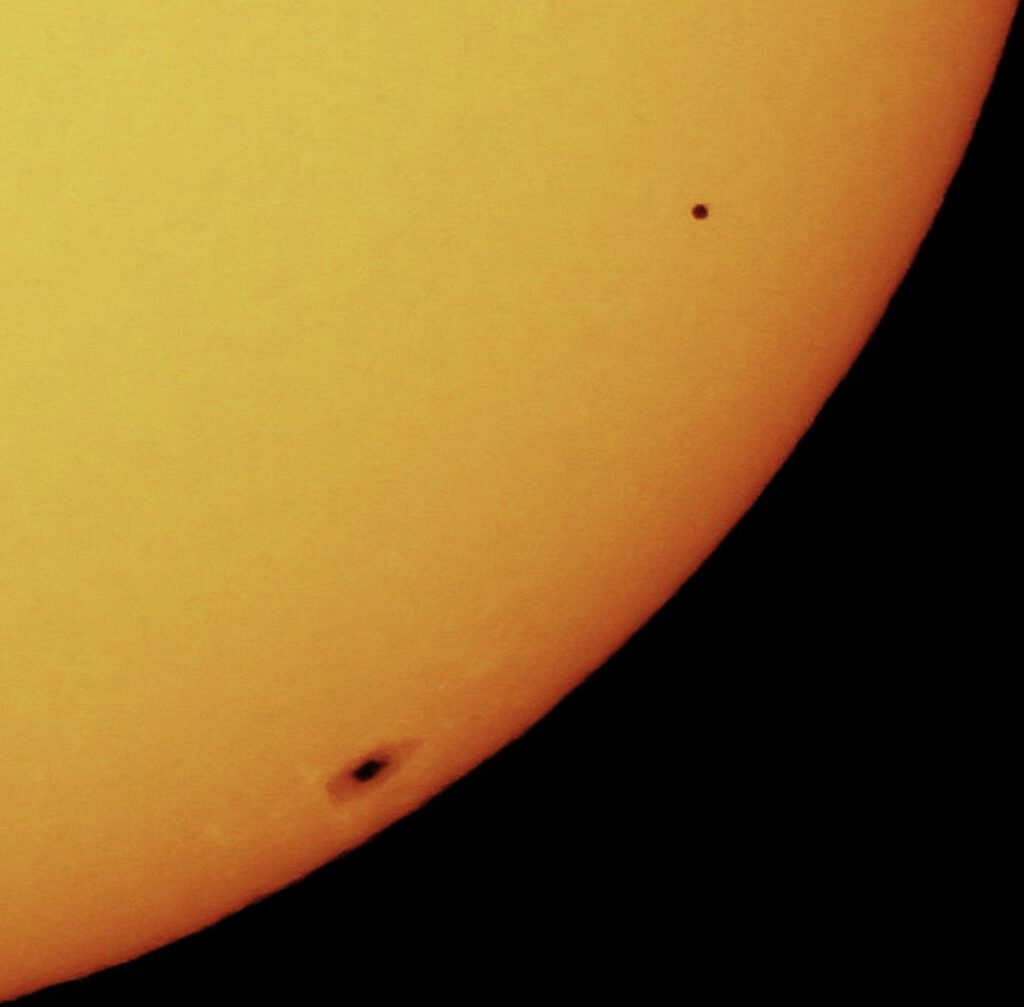
After having the chance to use the Thousand Oaks Optical solar filter, I find it to be an affordable and reliable option for solar observation.
Pros
Cons
When I received the filter, I was eager to prepare for the upcoming solar eclipse. With its generous size, I was able to create multiple custom filters and was impressed by the crispness of detail I could see on the sun’s surface. The filter was straightforward to shape, and I attached it to my equipment securely with adhesive tape.
Viewing the sun through this polymer filter drew out intricate sunspots and granulation, enhancing my observation experience significantly. The resulting orange solar image felt soothing to the eyes, and there wasn’t any noticeable distortion or loss of detail.
Overall, this Thousand Oaks Optical solar filter sheet brought my solar observations to a new level. It offers flexibility for different telescopes and cameras, ensuring I could utilize it across multiple devices. While it requires some DIY, the results are well worth the effort, and I appreciated the safe and vivid observation it provided.
EclipSmart Solar Telescope Filter
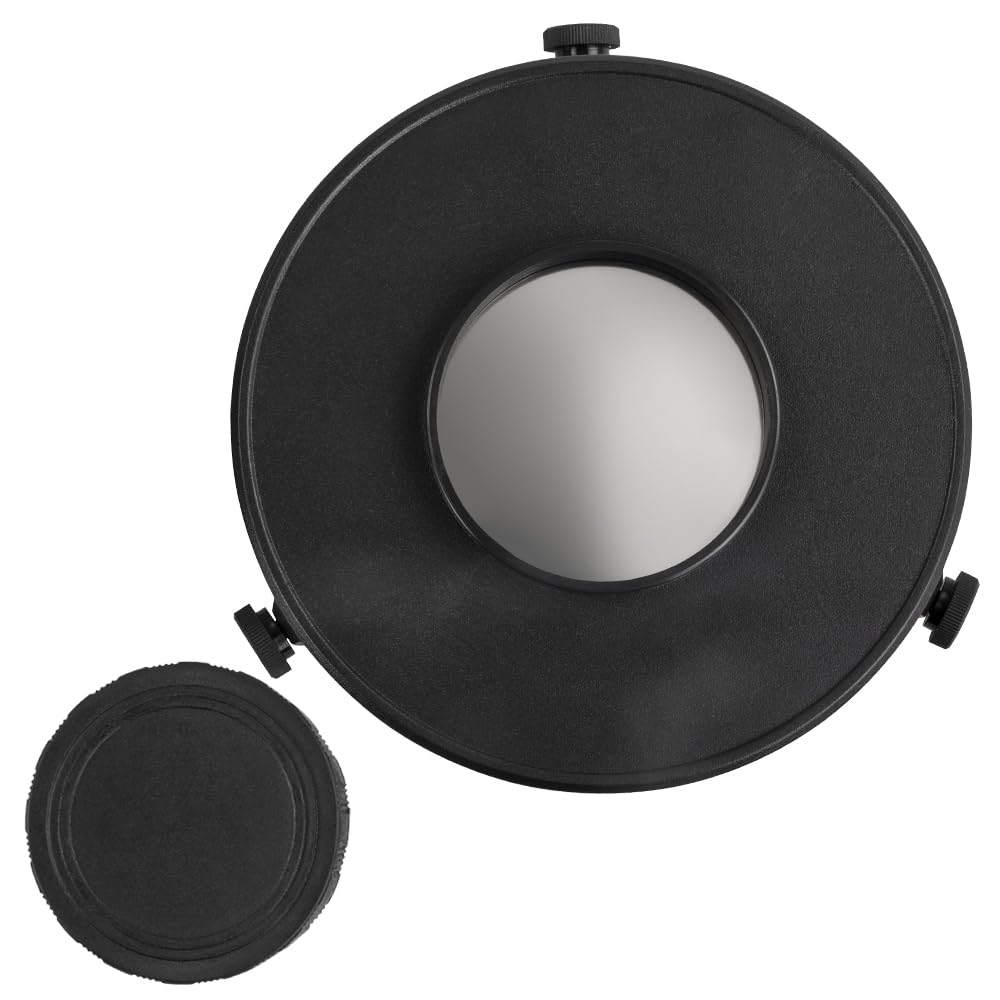
I highly recommend this filter for anyone looking to safely observe solar events through their telescope because of its certified protection and ease of use.
Pros
Cons
Having had the chance to recently attach the EclipSmart Solar Filter to my own Celestron telescope, I immediately appreciated the secure feeling provided by the three safety screws. It was clear that this filter meant no compromises when it came to safety, and it snapped on with a satisfying, snug fit.
One of its qualities that stood out to me was the image clarity. Observing the sun through this filter produced spectacular views, with a marvelous orange hue that added a level of depth to the solar surface. Sunspots and solar flares were vividly displayed, making my solar observations much more engaging.
Durability was another aspect I took note of. Despite being used extensively, the build quality felt reliable, and the safety cap ensured the filter stayed protected when not in use. The filter not only felt sturdy but also like a worthy investment for my solar viewing activities.
Thousand Oaks 8″x8″ Solar Filter
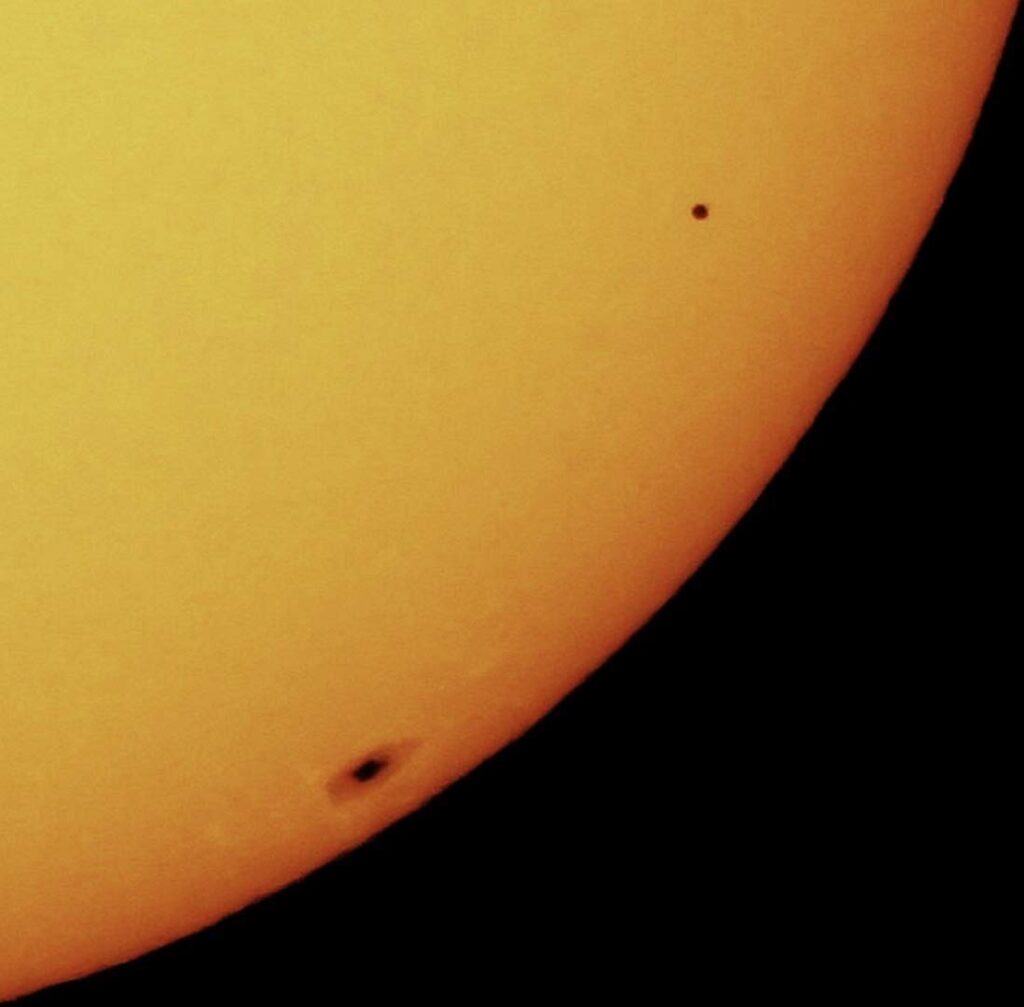
After using this solar filter, I can confidently endorse it for both amateur and seasoned astronomers seeking safe solar observation.
Pros
Cons
I recently had the opportunity to use the Thousand Oaks 8″x8″ Solar Filter Sheet while observing some spectacular sunspots. The clarity of the image it provided was astonishing, and the sun appeared in a stunning natural orange hue. It immensely enhanced my viewing experience, making it both safer and more immersive.
Crafting a filter from this sheet was surprisingly straightforward, and I felt assured knowing it was from Thousand Oaks Optical, a specialist with extensive experience in solar filtration. While I had to take extra care in securing the filter to my equipment, ensuring there was no risk of it falling off during observation, the sense of accomplishment I got from this DIY endeavor was gratifying.
The versatility of this filter sheet was remarkable. Knowing I saved money by creating my own fit rather than purchasing a pre-made one was a keen reminder of its value. However, I advise you to measure twice and cut once, as any errors cannot be undone. Despite this, it’s a superb choice for anyone looking to observe the sun safely.
Buying Guide
Types of Solar Filters
Solar filters come in two main types: glass and film. Glass filters tend to offer better durability and optical quality, while film filters are more affordable and lightweight.
Key Features to Consider
- Optical Density: I ensure the filter has an optical density of 5 or greater for safe observation of the sun.
- Coating: I look for uniform coating without imperfections to ensure consistent solar imaging.
- Size and Fit: It’s important to choose the right size for my telescope to avoid light leakage.
Assessing Filter Material
- Glass Filters: Offer sharp, clear images and are resistant to scratches.
- Film Filters: More economical and easier to handle, but can be damaged more easily than glass.
Mounting
I prefer filters with secure mounting hardware or systems to ensure the filter stays in place during observations, avoiding any direct sunlight entering the telescope.
Certification
- International Safety Standards: I check for ISO certification to guarantee the filter meets safety requirements.
- Reputable Safety Certifications: Ensures the filter has been tested to protect my eyes and equipment.
Budget Considerations
While it may be tempting to go for the cheapest option, I remember that quality and safety should not be compromised. I balance cost with the features and safety standards to ensure a wise investment.
Frequently Asked Questions
When selecting a solar filter for your telescope, the key considerations involve safety, compatibility, and the type of solar details you wish to observe. Let me guide you through some common questions about solar filters for telescopes.
What are the criteria for choosing an effective solar filter for my telescope?
I ensure that the filter material is certified to meet the ISO 12312-2 safety standard. The filter should fit snugly over the front end of the telescope, blocking out all sunlight except what passes through the filter. Optical density and evenness of the filter’s substrate contribute to a clear and safe viewing experience.
How do solar filters protect the telescope and the eyes during solar observation?
Solar filters block over 99.999% of incoming sunlight, allowing only a safe amount of light to pass through. They protect my eyes from harmful ultraviolet and infrared radiation as well as intense visible light. Without these filters, direct solar observation could result in significant eye damage or blindness.
Can I create a safe and reliable DIY solar filter for my telescope, and if so, how?
While it is possible to create a DIY solar filter, I procure the appropriate solar filter material that complies with safety standards. My homemade filter must cover the telescope aperture completely, securing the material without any gaps or punctures that could let through harmful sunlight.
What types of solar filters are recommended for detailed solar viewing, such as hydrogen-alpha filters?
For detailed observations of solar phenomena like prominences and flares, I recommend using a hydrogen-alpha (H-alpha) filter. These filters only allow the H-alpha wavelength of light to pass through, providing me with a view rich in detail of the solar surface and lower atmosphere.
Are there particular brands or models of solar filters that are recommended for Celestron telescopes or other popular telescope brands?
For Celestron telescopes, brands like Thousand Oaks Optical and Baader Planetarium are often recommended by astronomers. They craft filters compatible with various sizes and models, ensuring a secure fit for maximal safety and performance.
What should I consider when selecting a solar filter for a 6 inch or larger telescope?
For telescopes with an aperture of 6 inches or larger, I select a filter with a high-grade optical coating to handle the increased light gathering capability. I ensure the filter has a strong, secure mounting system to safely accommodate the larger size and prevent accidental removal.


